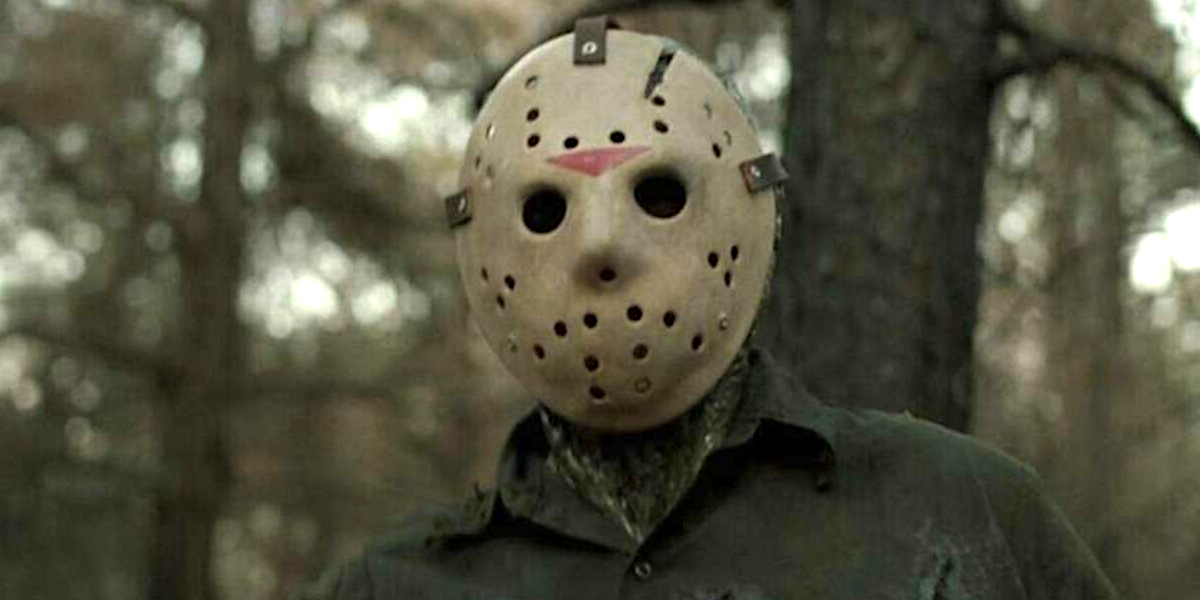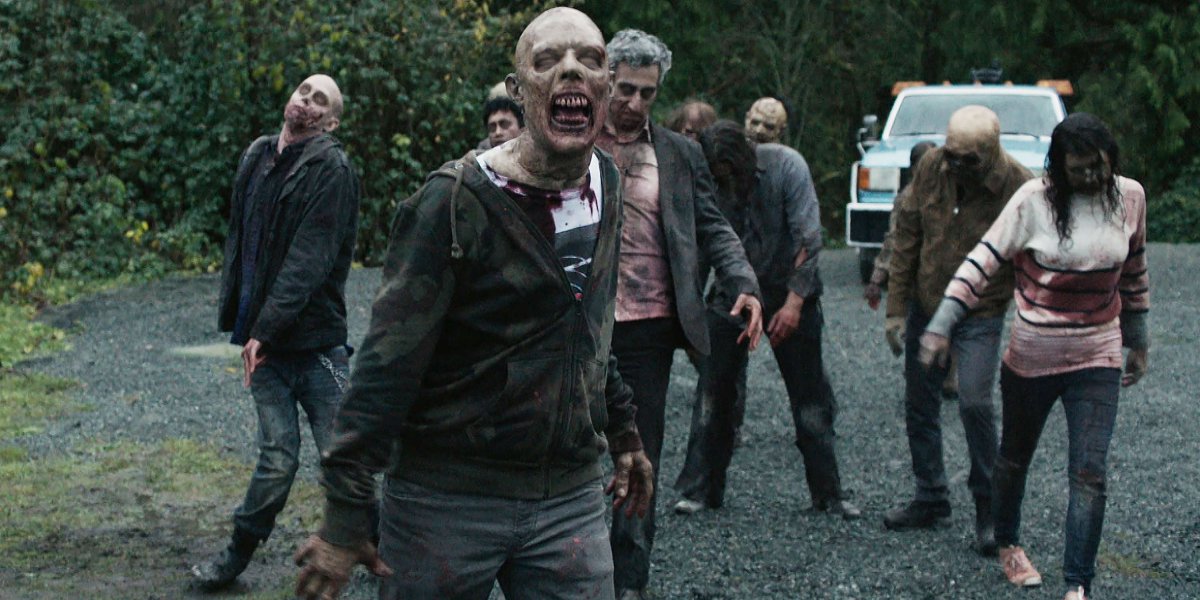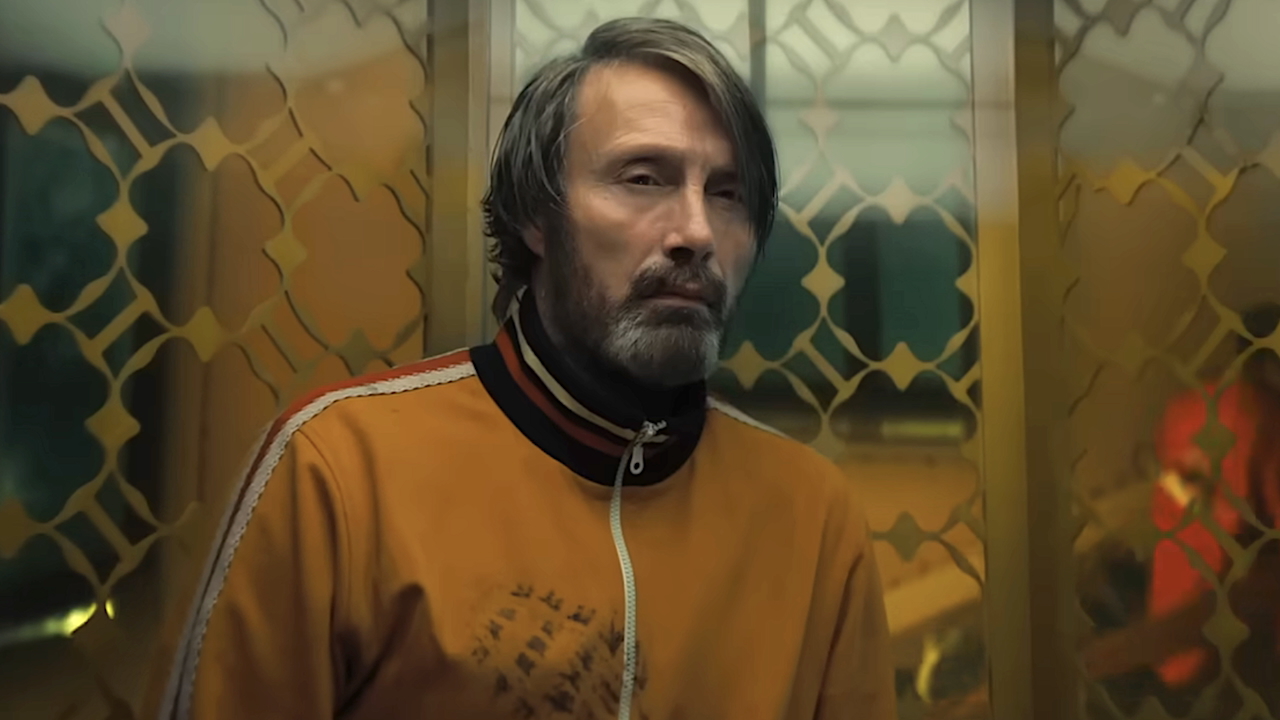Day Of The Dead: 10 Ghoulish Behind-The-Scenes Facts From George A. Romero’s Zombie Classic
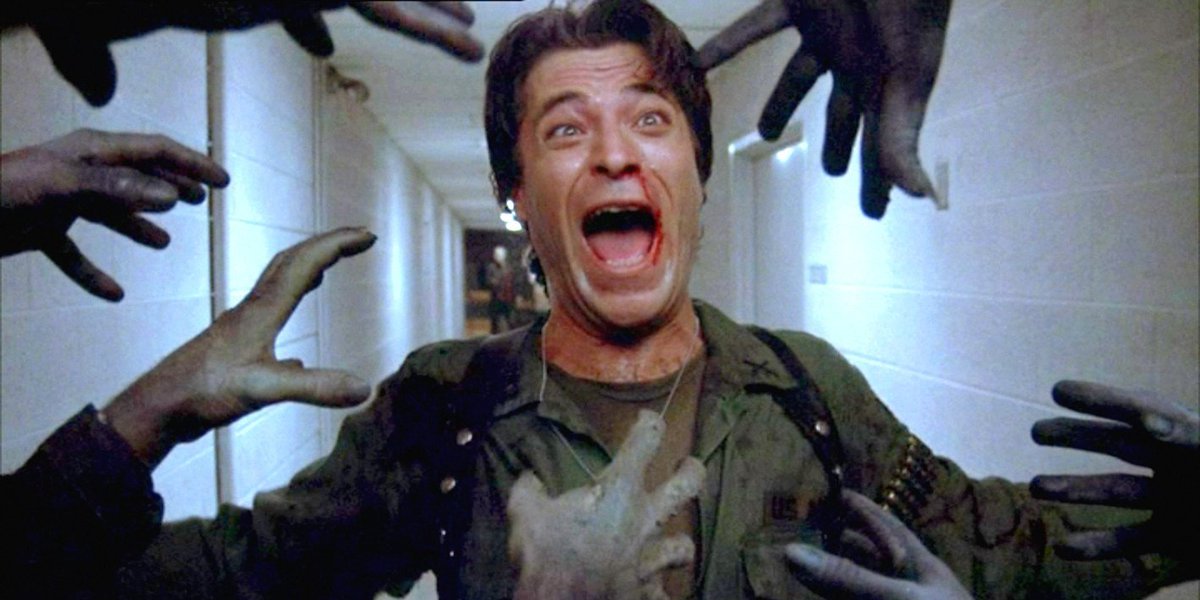
In 1968, George Romero changed the trajectory of horror movies with Night of the Living Dead, which he followed up with the equally as important Dawn of the Dead. So, when the “godfather of the zombie movie” prepared to release the third part in his iconic franchise — Day of the Dead — in the 1985, it’s safe to say expectations were high. And, despite a last-minute slashing of the film’s budget, issues with props and special effects, and all-around bleak narrative and presentation, Day remains one of the best scary movies and a bright spot in Romero’s filmography.
That being said, there are plenty of great behind-the-scenes facts from the making of the movie that not only give you a greater appreciation for the film itself, but also the men, women, and zombies who made it a reality more than 35 years ago.
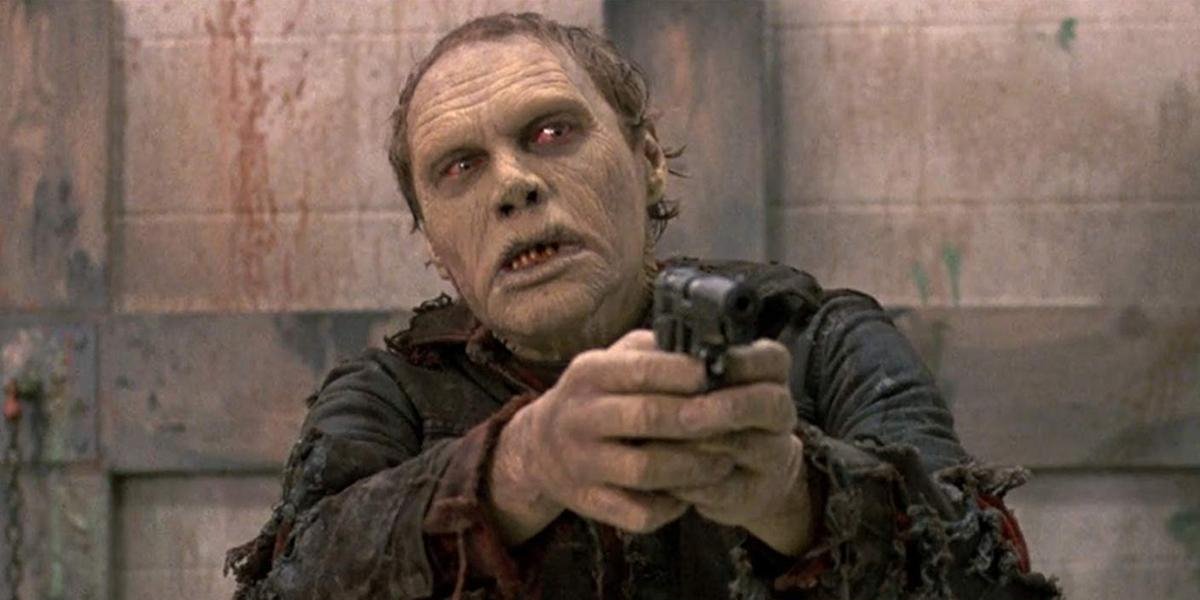
George A. Romero Was Given A Choice: Make Day Of The Dead An R-Rated Movie Or Cut The Budget In Half
When Day of the Dead opened in theaters in October 1985, it was released unrated, meaning no one under the age of 17 would be allowed to watch the movie, even with parental supervision. Like George A. Romero’s previous zombie movies, Day of the Dead was full of grotesque zombies, visceral gore, and language that would make just about anyone blush, even the undead. In order for Romero to keep as much of his original vision for the film (more on that later), he was forced to compromise with executive producer Salah M. Hassanein in that he could keep the film unrated, but only if he agreed to cut the budget in half, from $7 million to $3.5 million.
In The Many Days of Day of the Dead, George A. Romero explained that he decided to take the executive producer up on the offer and trim down the script and create the claustrophobic and more dialogue-heavy theatrical version.
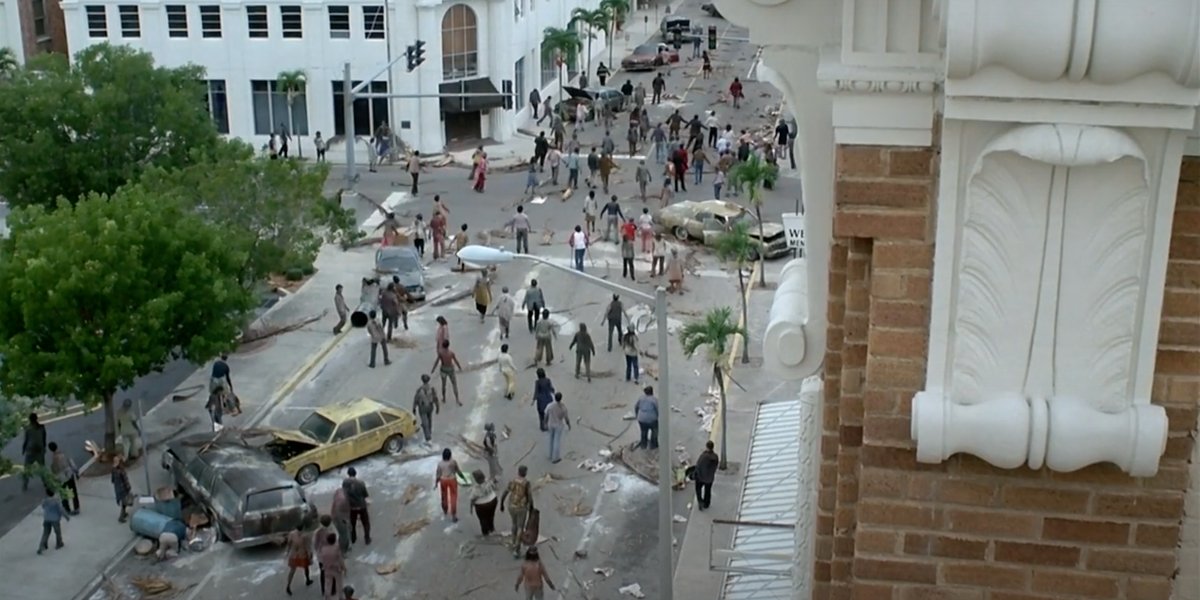
Tom Savini Described The Original Vision For Day Of The Dead As ‘Raiders Of The Lost Ark With Zombies’
By cutting the Day of the Dead budget in half, George A. Romero was forced to go back to the drawing board and take out many of the above-ground action sequences he had originally written, and essentially do away with a large chunk of the script. In The World’s End: The Making of Day of the Dead, the original version of the movie not only featured the large underground base of operations that had been setup by the military but also a jungle compound on the surface where scientists would conduct experiments on the undead and even included a literal army of zombies. To best describe the size and scope of the original script, special effects legend Tom Savini called Day of the Dead “Raiders of the Lost Ark with zombies.”
The ideas weren’t all lost, as some of the aspects originally intended for Day of the Dead ended up being included in 2005’s Land of the Dead.
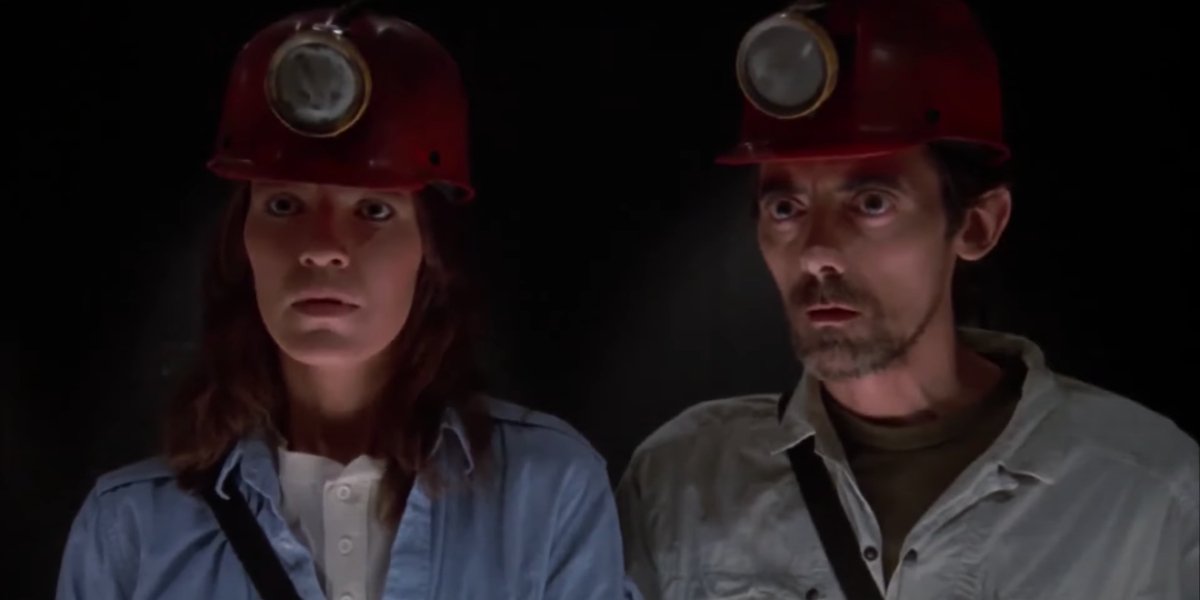
Day Of The Dead Was Largely Filmed In An Old Mine That Was Turned Into An Underground Storage Facility
Like Night of the Living Dead and Dawn of the Dead before it, Day of the Dead was largely filmed in George A. Romero’s native Pennsylvania with the majority of the production being conducted in an old mine that had been turned into the Wamp Underground storage facility, according to Penn Live. The filming location was even worked into the story told in the movie, which sees what’s left of the survivors hunkering down in the sprawling underground facility.
Your Daily Blend of Entertainment News
Sections of the old mine were even turned into the corrals the soldiers use to gather zombies for experimentation, and William McDermott (Jarlath Conroy) and John (Terry Alexander) even live in a construction trailer situation among boats, RV’s, and the other vehicles being stored there. Other portions of Day of the Dead were filmed in Fort Meyers, Florida, including the opening sequence.
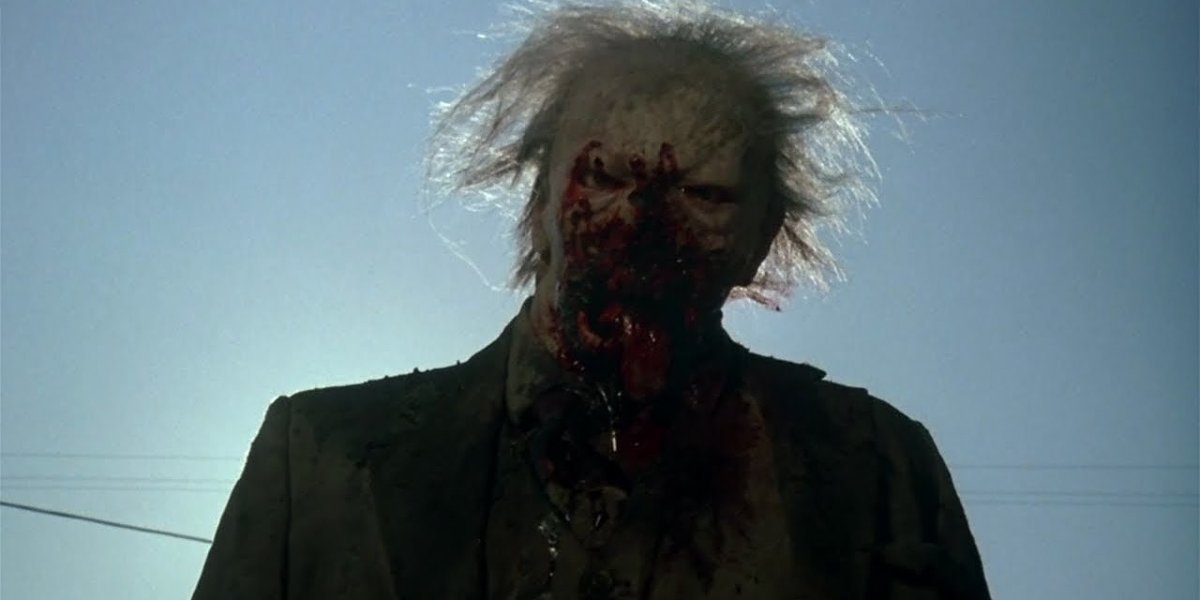
Tom Savini Used His Basement As The Base Of Operations To Build All The Zombie Effects Prior To Shooting
One of the major differences between Day of the Dead and its predecessors is the sophistication of the special effects and makeup created by Tom Savini and his team. Savini, who had created some of the most iconic zombie kills of all time through his work on Dawn of the Dead, started preparing with his team months before the start of production on Day of the Dead, and had his small yet talented team join him in his basement to get everything in order. In The World’s End: The Making of Day of the Dead, Savini recalled spending all day, every day for months making foam that would then be put into molds to create dozens upon dozens of small, medium, and, large zombie applications.
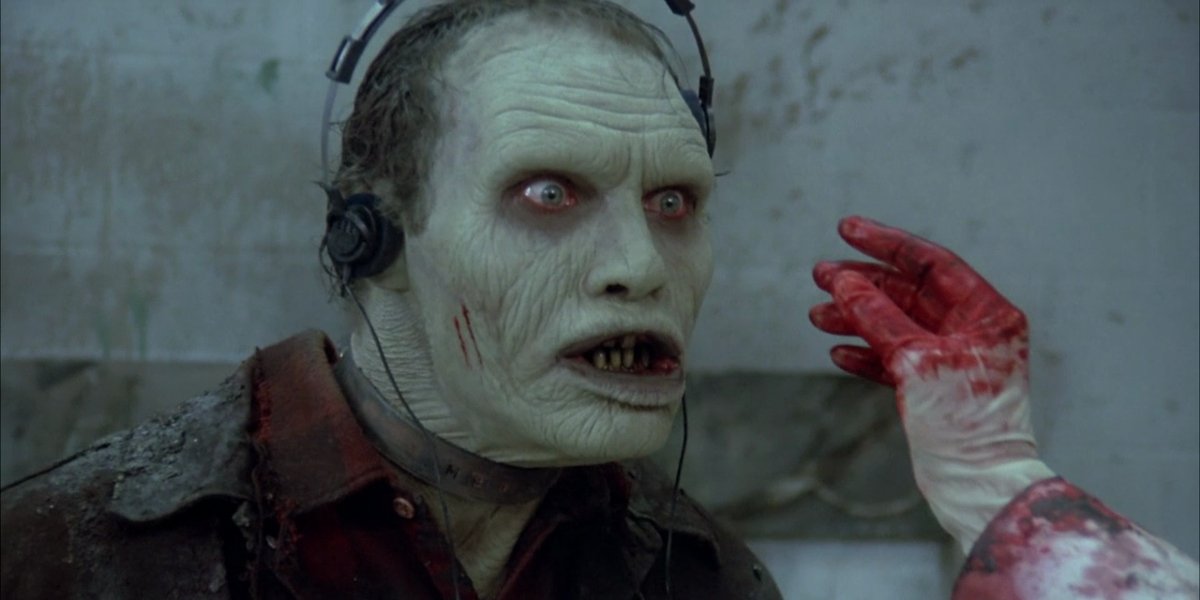
Bub The Zombie Listening To A Walkman Wasn’t Originally Written Into The Script
At the heart and center of Day of the Dead is the story of Bub (Sherman Howard), the smart zombie showed that the undead could be taught to complete menial tasks or even remember parts of their previous lives. One of the scenes that best illustrates this (well, besides Bub shooting Captain Rhodes) is seen when the zombie picks up a Walkman and starts listening to music. This pivotal moment, however, was not in the original script. In The Many Days of Day Of the Dead, Howard revealed that one day he was thinking about Bub and what he would do if he saw a tape-player and headphones. When he got back to the set, Howard told George A. Romero about the idea and the director lit up and said they should shoot it.
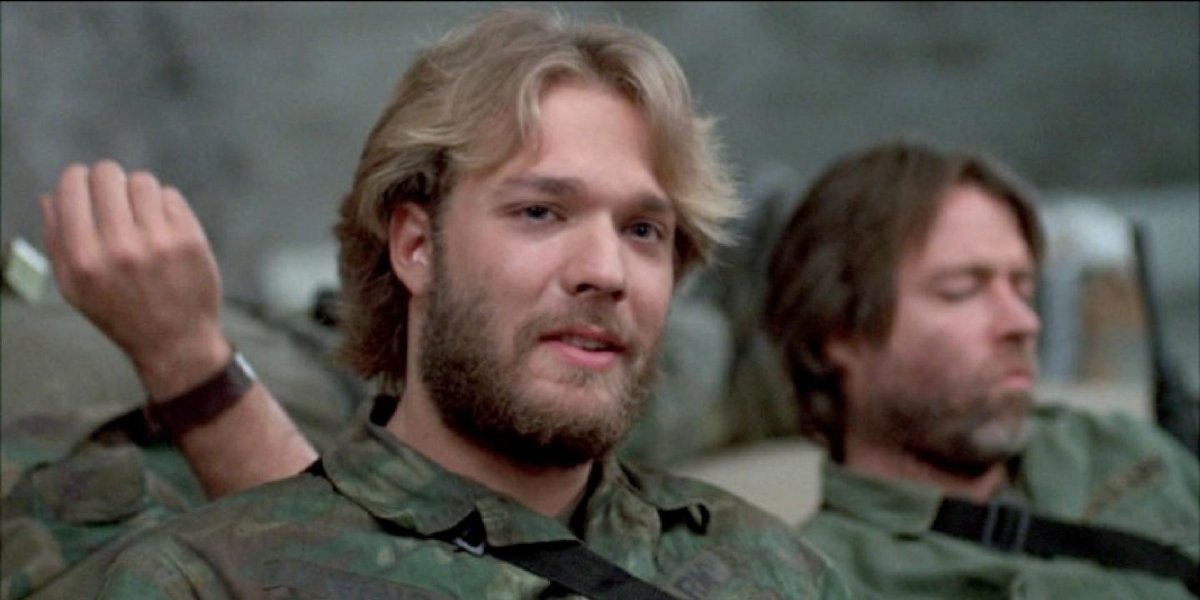
Special Effects Artist Greg Nicotero Got His First Acting Gig In Day Of The Dead Because Of A Mechanical Head He Helped Build
Greg Nicotero has gone on to become one of film and television's great special effects masterminds and creative forces with shows like The Walking Dead, and that all got started with his work on Day of the Dead. In a 2018 interview with EW, Nicotero talked about his experience working as Tom Savini’s assistant on the zombie film and how a mechanical head that he helped create earned him a spot in the cast.
Remember those budget cuts mentioned earlier? Well, some of the special effects had already been created before they went into the movie, so George A. Romero and Tom Savini were left with a fully-operational mechanical head and nothing to do with it after a section of the movie was cut out. To keep the gag in the movie, they wrote a character for Greg Nicotero as one of the soldiers that is killed and turned into one of the experiments.
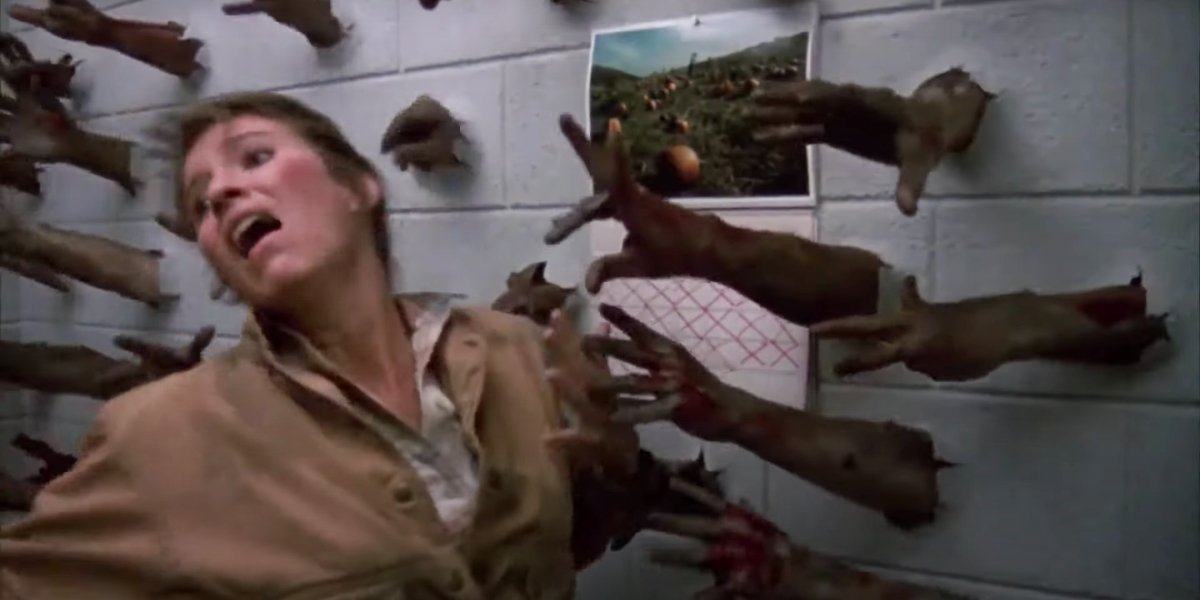
The Prop Wall Used In Sarah Bowman’s Zombie Dream Sequence Had To Be Rebuilt After It Fell On The Actress
Day of the Dead opens with a dream sequence that shows Dr. Sarah Bowman (Lori Cardille) walk and look at a calendar hung up on the middle of a cinderblock wall only to have dozens of zombie hands rip through and grab her. In The World’s End: The Making of Day of the Dead, Cardille revealed that when they went to film that scene for the first time, the weight and momentum of the actors playing the zombies pushing through the wall forced it crashing on top of her. Though she thought it was funny, Cardille admitted that she felt bad for the crew who had to rebuild the contraption and spend so much time getting it all setup.
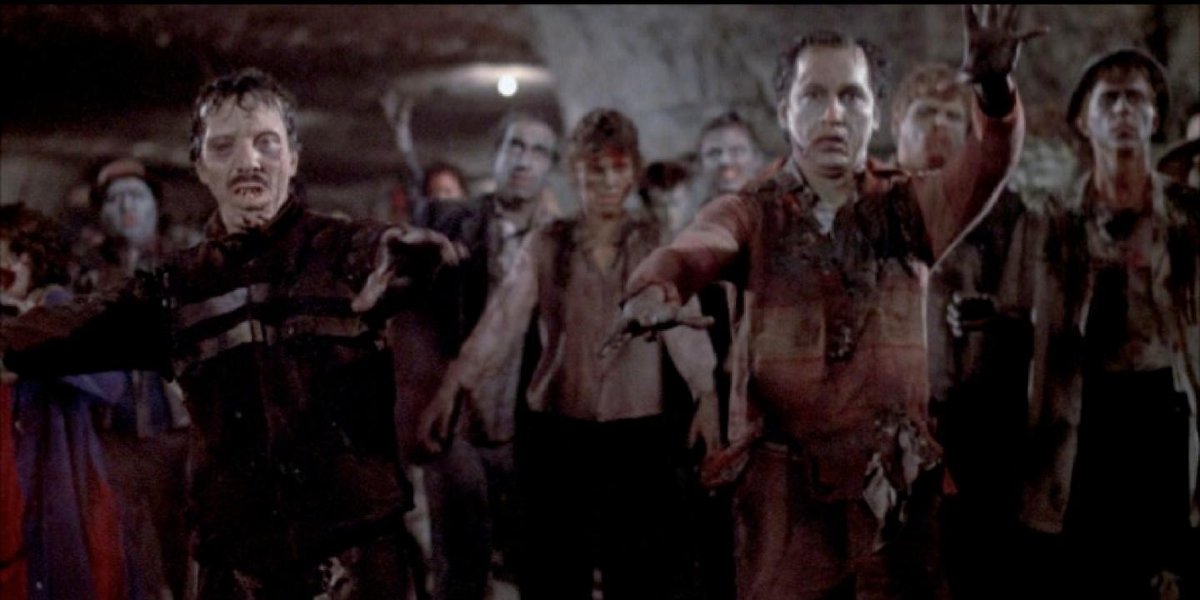
Extras Were Given One Dollar, A Fake Newspaper And A Hat Reading ‘I Was A Zombie In Day Of The Dead”
You can’t have a movie where the undead outnumber the living by a great number like in Day of the Dead without lots of undead, meaning there was a great need for extras to play all those zombies. In the documentary Behind The Scenes with Day of the Dead, two of the members of the crew in charge of the extras revealed that all of the hundreds of “zombies” received three things for being in the movie: a $1 bill, a copy of the newspaper with the headline “The Dead Walk” as seen in the opening title sequence, and a hat reading “I Was a Zombie in Day of the Dead.”
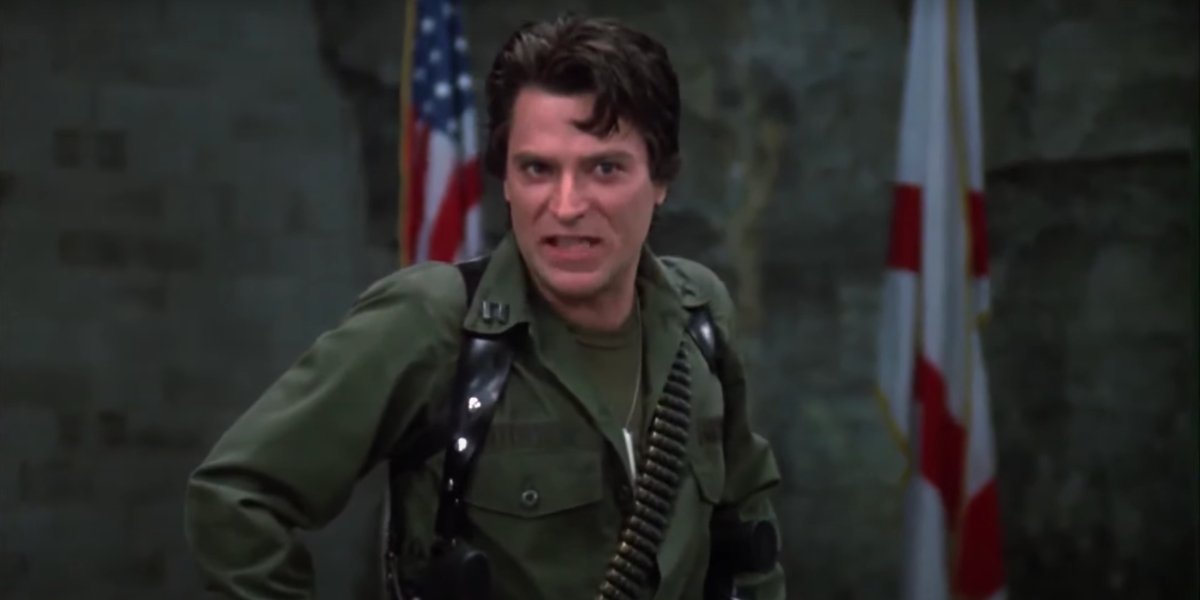
Joseph Pilato Was Given The Role Of Captain Rhodes As Soon As He Auditioned
Of all of George A. Romero’s zombie movies, Day of the Dead features the best villain in Captain Henry Rhodes (Joseph Pilato), the tyrannical and unhinged soldier who has taken command of the remaining survivors. Prior to landing the career-defining role, Pilato had worked with Romero on Dawn of the Dead (much of his appearance was cut) and Knightriders, which probably helped him get the job. In a 2000 interview with Homepage of the Dead, Pilato revealed that Romero essentially gave him the gig as soon as he came in for an audition.
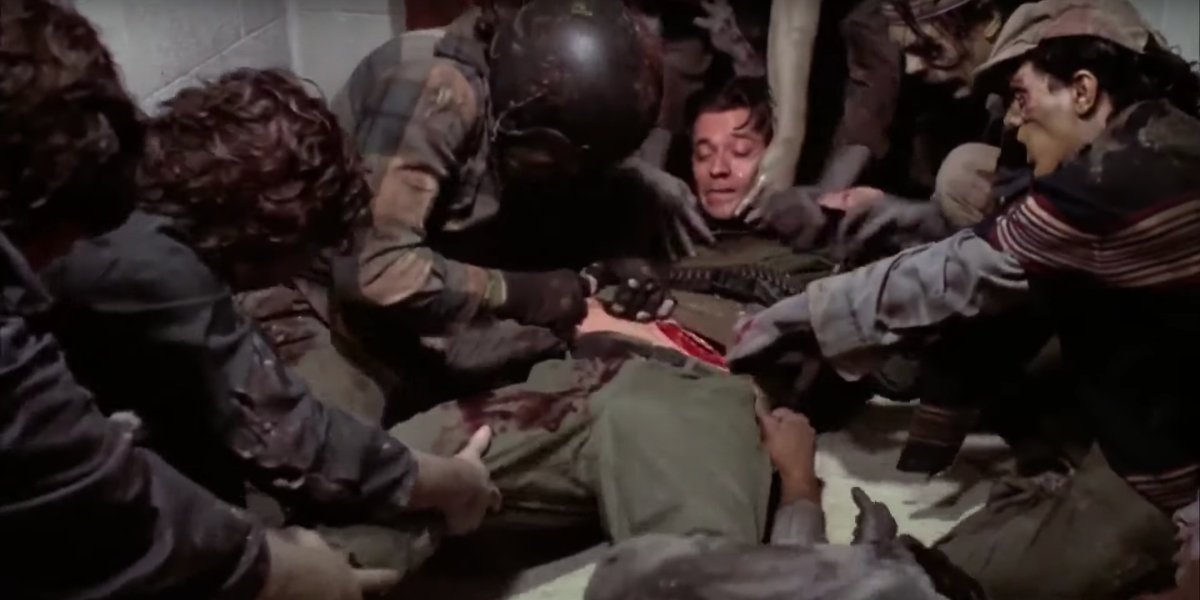
The Pig Guts And Chicken Parts For Captain Rhodes’ Death Scene Spoiled When The Fridge Containing Them Was Unplugged
Captain Henry Rhodes’ death scene at the end of Day of the Dead remains one of the most visceral and disgusting in the history of zombie movies, but it pales in comparison to what the cast and crew had to endure when filming the scene, especially Joseph Pilato. In The World’s End: The Making of Day of the Dead, Tom Savini explained that all of the pig guts and chicken parts that were used to replicate Rhodes’ intestines being ripped out were left in a fridge until they were needed.
When the crew left to shoot exteriors in Florida partway through production, someone unplugged the fridge with everything inside it being left to rot for several weeks. By the time anyone found out, it was too late and they had to complete the four-hour process of staging and shooting with the rancid meat.
While everyone on the crew were able to wear masks and the zombies put wax up their nostrils to hide the smell, Joseph Pilato (whose body was hidden by a false floor) had to stand there and endure the smell of rotten meat for hours.
Day of the Dead is still a marvel of storytelling and special effects considering all the changes George A. Romero and company had to make along the way, and there’s a good chance you’ll see some of the old tricks be used in some of the upcoming horror movies. And, if zombies aren’t your bag, there are still plenty of non-horror 2021 movies on the way.

Philip grew up in Louisiana (not New Orleans) before moving to St. Louis after graduating from Louisiana State University-Shreveport. When he's not writing about movies or television, Philip can be found being chased by his three kids, telling his dogs to stop barking at the mailman, or chatting about professional wrestling to his wife. Writing gigs with school newspapers, multiple daily newspapers, and other varied job experiences led him to this point where he actually gets to write about movies, shows, wrestling, and documentaries (which is a huge win in his eyes). If the stars properly align, he will talk about For Love Of The Game being the best baseball movie of all time.
